Barbarous Gold Is Back
No one wants a gold standard again. But...
ELITES are extremely hostile to the idea that gold should have any role whatsoever in the monetary system, says Jim Rickards in The Daily Reckoning.
To them, gold is truly a barbarous relic, as John Maynard Keynes was supposed to have said. You might as well propose bringing back the horse and buggy.
Except Keynes never said gold was a barbarous relic. What he did say was more interesting. In his 1924 book Monetary Reform, Keynes in fact wrote, "The gold standard is already a barbarous relic."
Keynes was discussing not gold, but the gold standard. There might not seem to be a difference, but there is. In the 1924 context, he was right. The classical gold standard ended in 1914 with the outbreak of WWI. To pay for the war, combatants printed massive amounts of money.
After the war many wanted to return to the prewar gold standard. In 1925, for example, the British exchequer was Winston Churchill. He wanted to return to the old gold price, ignoring the fact that the wartime money printing demanded a much higher gold price. He in effect overvalued the pound.
Keynes told Churchill this would be a deflationary disaster. If Britain was to go back on a gold standard, it would have to set the gold price higher. But Churchill ignored his advice.
The result was massive deflation and depression in Great Britain, years before depression struck the rest of the world.
The notoriously flawed gold exchange standard that prevailed until 1939 should never have been adopted, and should have been eliminated before WWII did the job. These days, there isn't a central bank in the world that wants to go back to a gold standard (though many are hoarding gold themselves). But that's not the point. The question is whether they will have to.
I've had conversations with several Federal Reserve Bank presidents. When you ask them point-blank, "Is there a theoretical limit to the Fed's balance sheet?" they say no. They say there are policy reasons to make it higher or lower, but that there's no limit to the amount of money you can print.
That's completely wrong. That's what they say; that's how they think; and that's how they act. But in their heart of hearts, some people at the Fed know it's wrong. Luckily, people can vote with their feet.
I always tell people who say we're not on the gold standard that, in a way, we are. You can put yourself on a personal gold standard just by buying gold. In other words, if you think that the value of paper money will be in some jeopardy, or confidence in paper money may be lost, one way to protect yourself is by buying gold. And there's nothing stopping you.
The typical response is, "What's the point of owning gold? They're just going to confiscate it, like Roosevelt did in 1933." I find that extremely unlikely.
In 1933, we'd just come through four years of the Great Depression, and Roosevelt was new in office. People talk about the first hundred days, but he closed the banks right after he was sworn in. And he confiscated gold only a few weeks later.
And it wasn't as if Eliot Ness was going door to door, breaking into your house and taking gold. They wanted to get a small number of people who had 400-ounce bars in bank vaults. And they got those people because they were able to close the banks and use them as intermediaries to confiscate that gold.
But now, gold is far more dispersed, and there's far less trust in government. If the government tried to confiscate gold today, there would be various forms of resistance. The government knows this. So they wouldn't issue that order, because they know it couldn't be enforced, and it might cause various kinds of civil disobedience or pushback.
As long as you can own gold, you can put yourself on your own gold standard by converting paper money to gold. I recommend you do that. I'm not suggesting you convert all your Dollars to gold. Not at all.
But I do recommend having 10% of your investable assets in gold for the conservative investor, and maybe 20% for the aggressive investor – no more than that. Those are very high allocations relative to what people have. Most people own no gold.
If demand spiked suddenly, there's not enough gold in the world – at current prices – to satisfy that demand. Gold prices would have to rise dramatically to bring them in line with demand.
If some scenarios play out, you are going to see the price of gold rocket to the moon. And it may happen in a very short time.
You shouldn't expect a steady, gradual increase. Gold may to drift along sideways, going nowhere for a period. Then you'll see a spike, then another spike and then a super-spike. It could happen within months.
At that point, gold becomes a major force. Ultimately I expect gold to reach $15,000 an ounce or more. That figure isn't made up. I didn't come up with it to be provocative. It's a product of the actual math. They're the numbers you get when you simply divide the money supply by the amount of gold in the market. Under some scenarios, gold could even reach $27,000. There are many variables in play.
When the super-spike happens, you're going to have two Americas. You're going to have one America that was not prepared. Paper savings will be wiped out; 401(k)s will be devalued; pensions, insurance and annuities will be devalued through inflation. That's because it's not just the price of gold going up. It's the Dollar going down. Gold is just an indicator.
It's like taking the temperature of a patient with a fever and blaming it on the thermometer when it reads 104. The thermometer's not to blame for the fever; it's just telling you what's going on.
Likewise, the price of gold isn't an economic object or aim in itself; it's a price signal. It tells you what's going on in the economy.
And gold at the levels I'm talking about would mean that you've now verged into hyperinflation, or something close to it, because nothing happens in isolation.
Once expectations shift toward inflation, which is happening, it can be dramatic. Though the rate of inflation has reduced since peaking in June 2022, inflation's not going away. People are now beginning to sense that.
Still, central banks will never voluntarily return to a gold standard. But if gold is such a barbarous relic, if gold has no role in the monetary system, if gold is a "stupid" investment, then why are the Russians and Chinese, among others, stockpiling gold hand over fist? Are they stupid?
Well, I've spoken with many of them and I can assure you they're not stupid. But if there's a run on paper currencies (which is entirely possible) or borderline hyperinflation (also possible), central banks may have to go to a gold standard. Not because they want to, but because they find it necessary to calm the markets.
I suggest you buy your gold at current levels – around $2360 – and ride the wave up to much higher levels. It'll protect your wealth in the days ahead. Like every market, it will fluctuate. Nothing goes up in a straight line. But you want to focus on the longer-term picture. And it looks very bright for gold.
So I invite you to go on your own personal gold standard. One day, the rest of the world may join you.







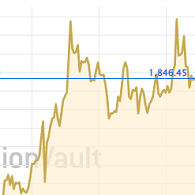
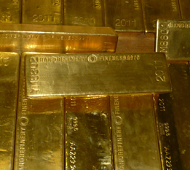
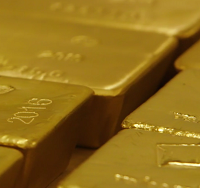
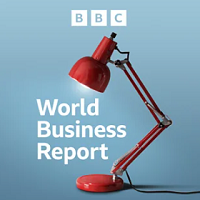
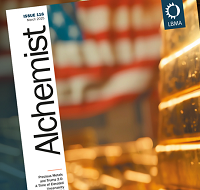
 Email us
Email us
